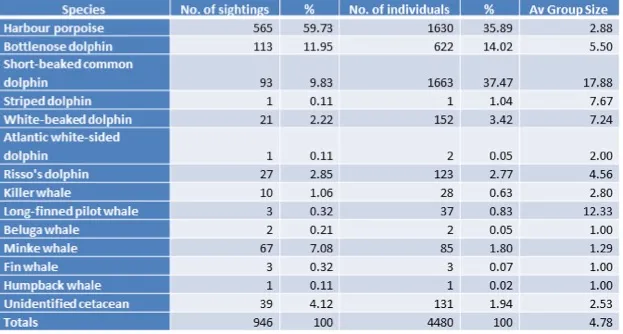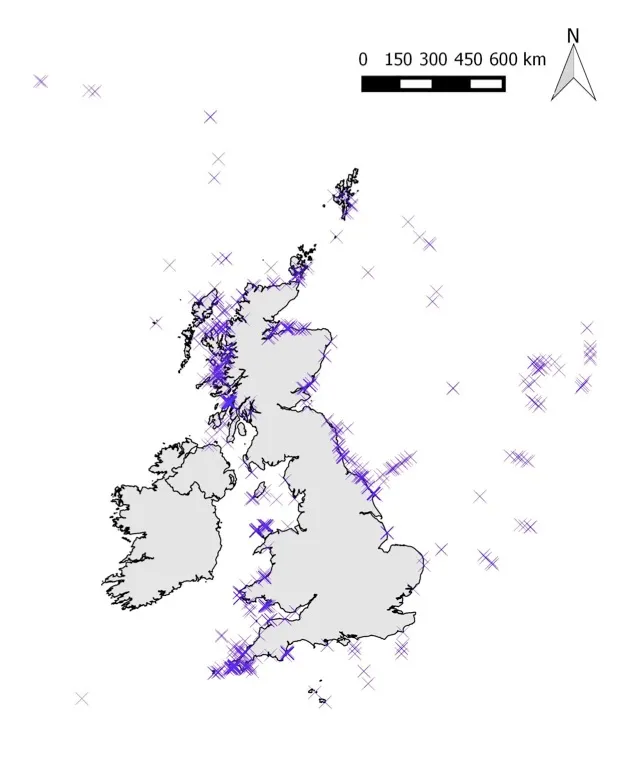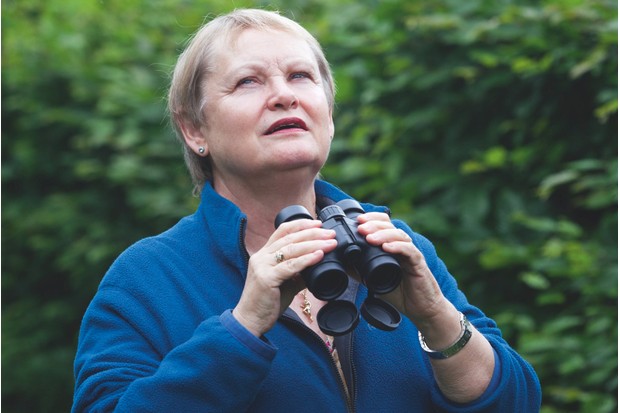The 2015 National Whale and Dolphin Watch (NWDW) recorded 13 species during the nine day long survey, which is a record for the event that is growing in popularity and support.
Species sighted in UK waters included humpback whales near the Inner Hebrides, fin whales just off Yorkshire, and Risso’s dolphins on our western shores.
For the past 13 years the Sea Watch Foundation has organised volunteers to mount patient observations out to sea for nine days to record every cetacean sighting and provide a snapshot of the distribution of large marine life around the country.
Not only were the watchers positioned on beaches and clifftops all over the UK, but they took to boats as well to catalogue the animals to be seen further from land.

A core of 276 volunteer cetacean observers were stationed at 113 land sites and 27 vessels, and spent 1141.5 hours collecting data in timed watches where the weather conditions were also detailed.
This valuable data collection is all the more impressive when you know that the national average sighting rate is one cetacean for every two hours of watching!
In northeast Scotland and the northeast of England, as well as south Devon, the chances are higher, with one animal an hour possible. And if you take to a boat it goes up again to one and a half sightings per hour.
Of course, these figures have to be read in the context of the numbers of people involved in each location.
To the dedicated watchers’ results were added the casual observations from a host of other volunteers. Even more members of the public attended one of the NWDW events that were held during the event days between 25 July and 2 August.
The total NWDW 2015 numbers of cetacean sightings were down slightly on the numbers seen in NWDW 2014, but last year stood out in providing evidence of two more species than had been seen the previous year, and one species entirely new to the NWDW.
A chart of all sightings from NWDW 2015 is below:

The findings of the study reveal that the species you are most likely to see around the UK is the harbour porpoise. They are also the most widely distributed, appearing all around the country, with concentrations in northeast England, Cornwall, southwest and north Wales, and around the Inner Hebrides and southwest Scotland.
Bottlenose dolphin distribution was also widespread, but they were much less numerous than harbour porpoise and were not seen anywhere from north Yorkshire round to Dorset.
Minke whales are mostly congregated around southwest Scotland and the Inner Hebrides, and killer whales around Orkney. The surprise event for NWDW 2015, though, was the sighting of at least one beluga whale off Dunseverick in Northern Ireland – a first for the survey!
